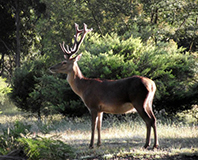Read the latest information on
Foot-and-mouth disease
 A number of proposed or completed culls of wild animals have gained publicity recently, including plans to reduce the number of brumbies in Victoria’s alpine regions, calls to lift quotas on kangaroo harvesting in New South Wales, and competitive pig hunts in Queensland. Despite sound arguments for this type of population management, culling is always controversial.
A number of proposed or completed culls of wild animals have gained publicity recently, including plans to reduce the number of brumbies in Victoria’s alpine regions, calls to lift quotas on kangaroo harvesting in New South Wales, and competitive pig hunts in Queensland. Despite sound arguments for this type of population management, culling is always controversial.
Arguments for range from minimising environmental damage to concerns around animal welfare when the good times turn bad (as they do in Australia) and many animals slowly starve, as well as managing wild animals as part of a responsible biosecurity strategy.
Nobody wants to be out culling animals, but sometimes it’s necessary. That’s according to Dr Simon Humphrys, Executive Manager of Biosecurity and Product Integrity at Animal Health Australia.
“Running a farm involves a holistic approach to land management,” said Dr Humphrys.
“As with anything, a good management strategy involves careful planning and no small number of trade-offs, for example taking total grazing pressure into account and wild animals eating pasture and crops just like livestock do.”
Both feral and native animals, especially pigs, can act as reservoirs for livestock diseases, some of which are zoonotic, meaning they can also infect and impact humans.
Introduced species, such as brumbies and pigs, also destroy habitats, compete with both native animals and livestock for feed and damage farm infrastructure, which itself leads to a range of other biosecurity concerns.
“Big animals are a threat on their own, but the damage they cause to fences, irrigation infrastructure, and other equipment also presents an opportunity for smaller animals,” said Dr Humphrys.
“They can also contaminate pasture and foul water sources, leading to disease outbreaks, algae blooms and other problems.”
There are a number of solutions for dealing with wild animals. Generally management plans advocate for less disruptive methods (e.g. trapping) being used before resorting to more disruptive methods like culling.
However, when populations reach really high densities, causing significant environmental damage, injuring livestock in the case of wild dogs, as well as increased disease risks to people, livestock and plants, culling is often the only option, however “There’s absolutely no excuse for unreasonable cruelty and suffering, we have a responsibility to ensure that any animal death is humane,” says Dr Humphrys.
“This is doubly the case with introduced species, or anywhere human activity has contributed to the problem.”
“On top of that land managers also have a responsibility to care for the health and welfare of our farmed animals and our land, and this necessitates managing wild animal populations.
Landholders wanting to know more about managing wild animals on-farm can visit the Ferals and Weeds page on the Farm Biosecurity website, or the Centre for Invasive Species Solutions.